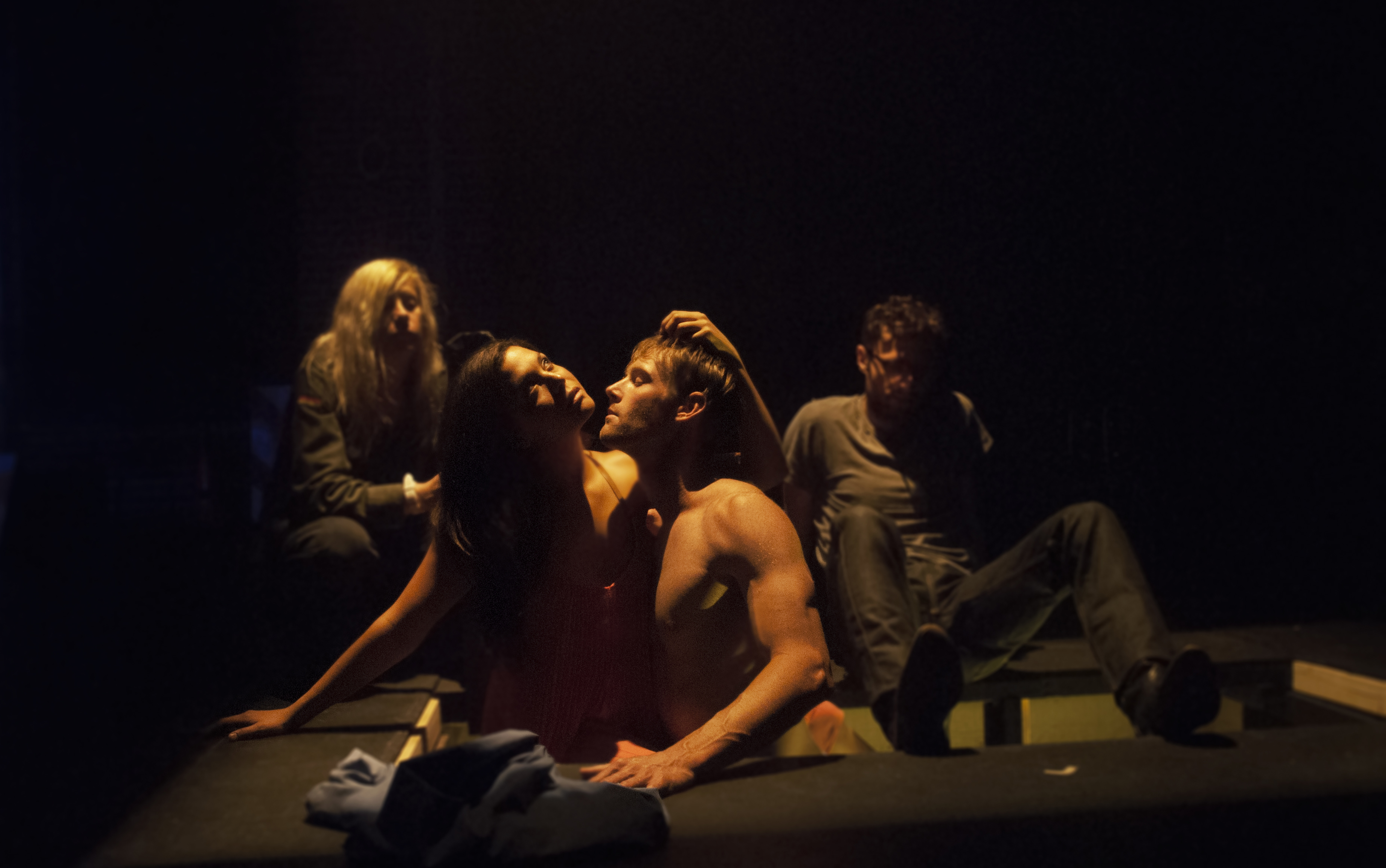
I played Rumplestiltskin in “Rumplestiltskin.” Seven years old. Terrified! I remember jumping on stage from a piano bench that represented the underworld. I liked playing a weird creature who turned flax into gold. A harbinger of things to come — not the gold part, the weird part.
You can make up your own play from scratch. It’s different from interpreting other people's words.
I played the emperor of Japan in the Mikado and innocent dandy Algernon Moncrieff in “The Importance of Being Earnest.” All through college I performed more than I studied, following the prescriptions of Shakespeare, Marlowe, Ibsen, Pirandello, and Shaw. I loved playing in the big productions at the Loeb Drama Center but the stories didn’t reflect the hard edges of my awareness. Something was missing.
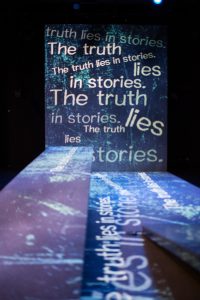 No matter. I found out you can make your own play. It’s different from interpreting others’ words. Making your own play usually requires a desire to say something about something; or say nothing about nothing. Something or nothing, you have to find the best way to say it with five elements: setting, character, dialog, action, and image. Oh, and music. Don’t forget the music.
No matter. I found out you can make your own play. It’s different from interpreting others’ words. Making your own play usually requires a desire to say something about something; or say nothing about nothing. Something or nothing, you have to find the best way to say it with five elements: setting, character, dialog, action, and image. Oh, and music. Don’t forget the music.
Endings are the hardest part when you’re working from scratch. If you know how your story was going to end, you probably wouldn’t have written it in the first place. At the end, you never know what — or who — to believe. It’s best to let your characters decide but you never know because… the truth lies in stories.
My playmaking began in the black box experimental theater at Harvard’s Loeb Drama Center. A guy named Mike Solomon came up with a script based on his — and my entire generation’s — obsession with 1950s comic book superheroes and the surreal nature of straight society. Mike called his comic-book drama “Rat Man Meets the Fifty-Foot Hindu” because that’s what happened.
Robert Crumb and Zap Comics hadn’t surfaced yet, but “The Realist” had. Comic writers Stan Freeberg, Paul Krassner, Lenny Bruce, Jonathan Winters often tripped into a comic surrealism to parody life in hegemonic, mid-Century America. Wiggy, man. Cartoonist Gilbert Shelton created Wonder Warthog, a comic book anti-hero who hated society and killed everybody he didn’t like. But nobody had done anything like “Ratman” for the stage. There were no special effects and no budget. We designed it as we went along.
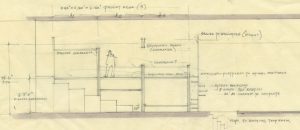 When you collaborate on original work you need to be open to explosion and collapse. Words and blocking, every sequence, transition, action must be up for grabs until the whole thing works on stage. Cursed be the dramatist who insists that his or her words are unimpeachable.
When you collaborate on original work you need to be open to explosion and collapse. Words and blocking, every sequence, transition, action must be up for grabs until the whole thing works on stage. Cursed be the dramatist who insists that his or her words are unimpeachable.
New York’s White Castle hamburger restaurants served as the Fifty-Foot Hindu’s principle target for revenge. Ratman’s costume consisted of a black leotard, a red cape featuring a hand-drawn Ratman rat and tighty-whitey jockey shorts tugged high to The Rat’s waistline. I played a Fifty-Foot Hindu recently arrived in America to avenge the murder of the sacred cow. I spoke with an Indian accent and would have been boo’d off stage today for my cultural appropriations. Progress has been made.
My costume consisted of a white jacket from the Adams House dining staff, black slacks, and a white paper soda jerk’s hat replaced nightly due to the horrific damage done to it every evening when Ratman and I had locked horns in a revolving restaurant high above Manhattan, the pinnacle of the White Castle Tower. There was no tower, there was no revolving restaurant. Instead Ratman and I approximated the slow-moving grandeur of our curtain-dropping deathly duel by slowly circling the stage while spewing confrontation. There are no photos and, if anyone knows the whereabouts of Mike Solomon from Adams House, please let me know.
After we did “Ratman Meets the Fifty-Foot Hindu,” Mike and I drove across country. En route, a Pennsylvania State Trooper pulled us over. I had long hair. Mike sported a turned-up porkpie hat and plaid shorts that sagged beneath his Hawaiian shirt. When asked where we were going I replied, “California.” Mike stuck his thumb up, smiled a crooked grin, and said “surf’s up.” This Solomon-like observation confused the trooper and made him angry, but he let us go anyway. No more plaid shorts, Hawaiian shirts, and thumbs up in Ohio.
The next scratch show I built happened with the San Francisco Mime Troupe. In that company, we adapted old commedia dell’ arte scripts to the issues of the times: the Vietnam War, feminism, the ills of capitalism, civil rights. When you tackle issues like that, you wanna be funny, raucous, and bawdy. As with our Italian street theater ancestors, we echoed the illustrious realities of our times, a bunch of syphilitic freeloading crooks who’d bust their collective asses to put on a good show.
 The Mime Troupe performed its theater on a wooden commedia stage put up each day in a different San Francisco park. People gathered on the grass to cheer on our sweaty resistance farces.
The Mime Troupe performed its theater on a wooden commedia stage put up each day in a different San Francisco park. People gathered on the grass to cheer on our sweaty resistance farces.
The play would develop all summer, the lazzi, or physical comic bits would constantly change as would the script. Our performances were in continual flux, driven obliquely by the changing of events each day, the actors locking into close touch to improvise around hastily discussed developments in the world. Changes onstage required everyone’s full concentration to keep the show flowing.
Each fall, the Mime Troupe would take its shows on the road, moving from campus to campus, synchronizing our shows with New Left events — campus-based protests and demonstrations. We’d provide the entertainment, cheerlead protestors, then pack everything back in our unmarked white vans and take off for the next campus. We were authentic outside agitators, the kind that chancellors, local sheriffs, and the big mother FBI warned you about.
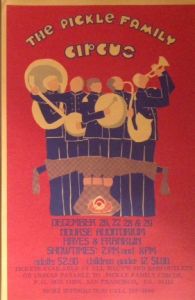 We created the Pickle Family Circus in the mid-70s. The first alternative circus in America, the Pickles drew on circus visionary Larry Pisoni’s artistry and momentum, embracing the ancient circus tradition from pre-history through European traditions of clowning and physical comedy. The list of the Pickle’s influences would fill a book, from Kabuki to vaudeville, to mime. We caged no animals and mounted a jazz/latin/funk ensemble that interacted prominently with the acts in the ring… yes, a ring, an honest-to-gawd circus ring.
We created the Pickle Family Circus in the mid-70s. The first alternative circus in America, the Pickles drew on circus visionary Larry Pisoni’s artistry and momentum, embracing the ancient circus tradition from pre-history through European traditions of clowning and physical comedy. The list of the Pickle’s influences would fill a book, from Kabuki to vaudeville, to mime. We caged no animals and mounted a jazz/latin/funk ensemble that interacted prominently with the acts in the ring… yes, a ring, an honest-to-gawd circus ring.
We took the Pickles on the road, too, traveling from Tijuana to Alaska to hook up with environmentalists and other rural activists to set the circus as the center attraction for community fundraisers. The Pickles gave direct spawn to New York’s Big Apple Circus, Montreal’s Sept Doigts de la Main Theater, and Cirque du Soleil.
During my stint with the circus, I teamed up with a smart, talented and hilarious Woman of the Theater who later became My Companion on the Road of Life. We decided to move to Los Angeles to expand our horizons. We would have moved to Manhattan but the island was too small to accommodate the Woman of the Theater and her mother.
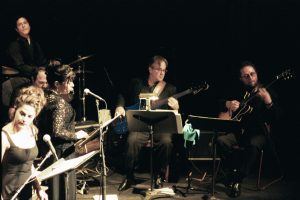 Our first LA project involved a political “living newspaper” cabaret designed to reflect weekly happenings in Reagan’s America. The band began the show and generated segues with musicians often crossing the line into the acts onstage. The Los Angeles Theater Center took us into residence in its grand downtown complex. We were the vagabonds in the black box of Theater Four and our work developed yearly.
Our first LA project involved a political “living newspaper” cabaret designed to reflect weekly happenings in Reagan’s America. The band began the show and generated segues with musicians often crossing the line into the acts onstage. The Los Angeles Theater Center took us into residence in its grand downtown complex. We were the vagabonds in the black box of Theater Four and our work developed yearly.
About that time, we also took a show to Cuba, another show with music. We were the first Americans to perform in Cuba since my guerrilla alma mater, the SF Mime Troupe, toured there. The best way to learn about a foreign land is to take a show there. We learned a lot about Cuba and its people. I felt completely at home.
We’re still producing shows, me and the Woman of the Theater. We’ve developed over a dozen plays, workshops, and full productions since we first began putting music and theater together in a loft above a muffler shop at the corner of Bush and Polk streets in San Francisco. Although I miss doing the classical works of the theatrical canon, the agony and ecstasy of creating one’s own show reigns supreme!
Writer, editor, and educator based in Los Angeles. He's also played a lot of music. Degelman teaches writing at California State University, Los Angeles.
Degelman lives in the hills of Hollywood with his companion on the road of life, four cats, assorted dogs, and a coterie of communard brothers and sisters.


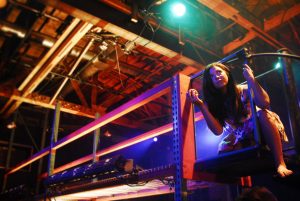

What an interesting and informed life you’ve led by “putting on a show”, Chaz. I’m sure studying the classics gave the grounding to do your life’s work, but you had political theater, provocation and education in your heart. You are fearless in your pursuit of your truths and have demonstrated it in your writing and how your’ve lived your life. Thank you for bringing us along for the ride.
Thanks, Betsy. I feel fortunate to have found some odd version of what I was looking for, ‘way back when I left Harvard and fell into the galaxy of New Left mobilization, SF political theater, Haight Street utopian anarchy, and back-to-the-land adventurers. Certainly I sought out my path, but without the friends and communities who embraced me decades ago, my life would have been very different.
It was interesting to respond to this great ‘Put on a show’ Retro prompt. I was able to revisit the world of process that the theater generates. It would be fun to pursue this further. Thanks again for your kind words!
I love this theatrical odyssey and the way it ties together other stories you’ve written for Retrospect into a single theme of making your own theater. As usual, there are priceless lines sprinkled throughout. I especially like the way “The truth lies in stories” turns in on itself, but I also appreciate your droll observation about the WOTT and her mother. Write on!
I think it would be fascinating (but a design nightmare) to create some kind of matrix app that would operate off key words to allow wordpress writers in general and Retro authors in particular, to view the patterns in their stories including recurring characters, themes, locations and timelines. What constellations might we discover?
I’m guessing you know about the Upper West Side, gun-slinging potential between mothers and daughters.
I agree! Patti in particular has been wanting to do that sort of app. Out of scope for the time being, I’m afraid.
I’m not very familiar with the UWS mother-daughter dynamic, but perhaps it reaches its epitome there. And let’s not forget the daughters-in-law.
“…the stories didn’t reflect the hard edges of my awareness” an awesome line I wish I had written! I love that because of this you were compelled to express your own reality, one that obviously many others could relate to. Bravo!
I’m glad that line spoke to you, Patti. As we all know, the times demanded a response. As Willie Loman’s wife, Linda, once said, “Attention must be paid.”
Fascinating story, Charles, fascinating life! I’m loving the new Retrospect feature “Past Stories You May Have Missed” for this very reason…so glad to have discovered this one.
Glad you enjoyed “From Scratch,” Barbara. And thanks. I just got to look this one over, three years after the fact. Congrats to Retrospect for developing and maintaining such a popular and durable platform. Much has happened since then… to all of us. Who woulda thought???
I just discovered this memory. I think “Ratman” was the end of the term in 1964. I was told that the laughter was so loud that it disturbed the performance of “King Lear” that was going on simultaneously on the main stage. Someone had to come to the little theater to tell the audience to pipe down.
Great to hear from you, Eric. Your name sounds so familiar, we must have hung out at Harvard. “Ratman” might have been that early; it certainly was a pioneer in the realm of comic book anti-heroes, R.Crumb. Michael Solomon had a wonderful comic mind and think about him often, but have never found him. As I recall, the leaking laughter onto the main stage had to be quelled, but the interaction between the two productions became a ritual appearance by John Lithgow, who would appear onstage in “Ratman” with a spear and Viking helmet. Can’t imagine he wasn’t Lear — oh no, Daniel Selzer probably played Lear. Glad you enjoyed “From Scratch.”